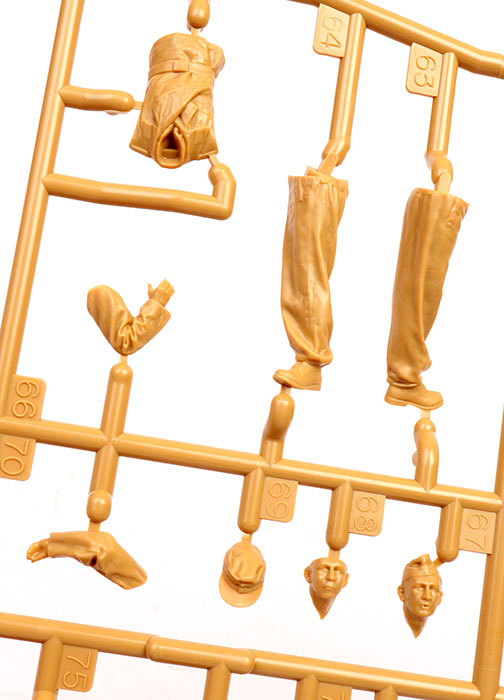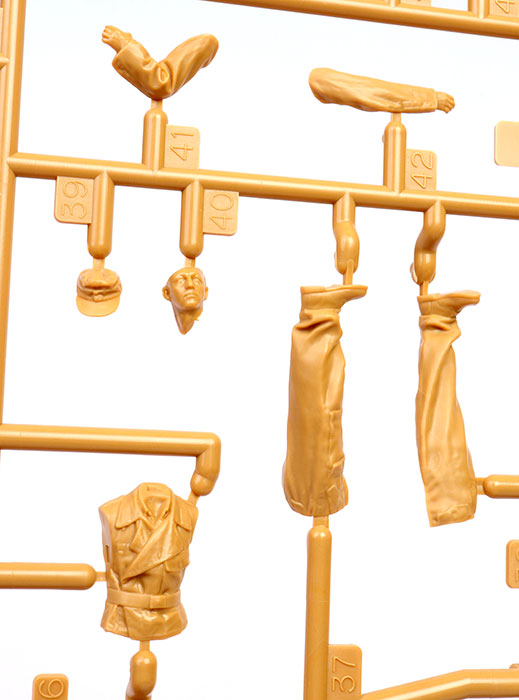|
|
|
|
Jagdpanzer Marder I (Sd.Kfz.135)
Tamiya 1/35 scale
Reviewed by Brett Green
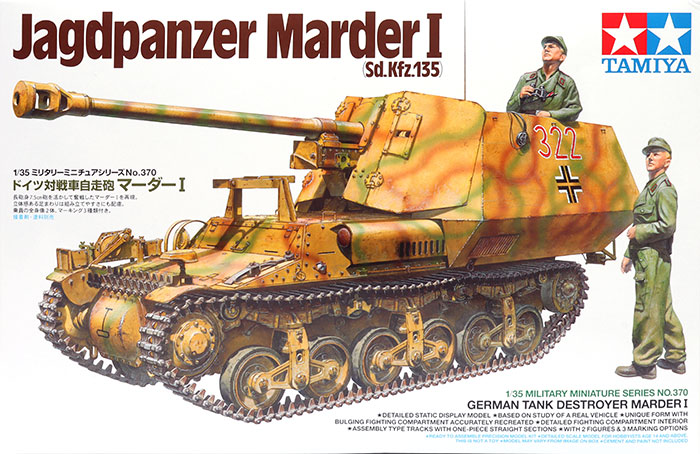
Summary
| Stock Number and Description | Tamiya Kit No. 35370 - Jagdpanzer Marder I (Sd.Kfz.135) |
| Scale: | 1/35 |
| Media and Contents: | 249 parts in dark yellow plastic, one photo-etched fret, four polythene caps and markings for two vehicles on the Eastern Front. |
| Price: | TBA |
| Review Type: | First Look |
| Advantages: | High level of detail; crisp mouldings; link and length tracks; fully perforated toolbox; includes some stowage; high quality Commander figure. |
| Disadvantages: | None noted. |
| Recommendation: | I have already built this model (see the photo at the bottom of the page), and I can confirm that it is another classic example of Tamiya’s ability to produce a well-detailed kit that is also fast and easy to build. The flat-pack hull, mutli-part stowage boxes and 14 part cupola all fit together perfectly and are really no chore whatsoever. The inclusion of the link and length tracks (which, surprise suprise, also fit together perfectly) and the relaxed Commander figure just round out this great little package. Build one! |
B a c k g r o u n d
The Marder I was a German World War II tank destroyer, armed with a 75 mm PaK-40 anti-tank gun.
Most Marder Is were built on the base of the Tracteur Blindé 37L (Lorraine), a French artillery tractor/armoured personnel carrier of which the Germans had acquired more than three hundred after the Fall of France in 1940.
From the early stages of Operation Barbarossa the Wehrmacht became aware that their ability to combat some of the Soviet tanks was inadequate. With the shock of having units overrun by new Soviet T-34s and KV-1s, the need for a heavier-gunned German tank became urgent.
As an interim solution, it was decided to use captured French vehicles such as the Lorraine, and less effective Wehrmacht tanks such as the Panzer II and 38(t) as the basis for makeshift tank destroyers. The result was the Marder series, comprising the Marder I, Marder II, and Marder III respectively.
These vehicles provided mobility to either the captured Soviet 7.62 cm Pak 36(r) gun or in later versions the German 75 mm PaK 40 anti-tank gun. Due to the weight and space constraints of the small chassis, the Marder series were not fully armoured. Thin upper armour protection was provided only for the front and sides against shrapnel and small arms only.
All Marder series had open tops. Some were issued with canvas covers to protect the crew from the elements.
The Marder series was not a proper Panzerjäger that could exchange fire with enemy tanks.*
The Marder I was developed in May 1942 by Major Alfred Becker. It carried the 75 mm PaK 40 anti-tank gun on a Lorraine chassis. As the gun was relatively large, the original crew compartment superstructure was removed to create the space needed to work the gun. This was done at Baustokommando Becker. The gun was then mounted atop the chassis.
Alkett, working in conjunction with Becker, produced the angled armour shielding for the crew compartment. The shielding was relatively light, and was open from above. The shielding provided the crew with protection from blast and small arms fire, but was not intended to stop armour piercing rounds. The vehicle's primary function was to provide mobility to the anti-tank gun. It was not intended as a replacement for a tank.
Between July and August 1942, 170 Marder Is were built on the Lorraine chassis. Later, several other French and Polish tanks were used as the conversion base for the Marder I, including the Hotchkiss H39 and FCM 36. These conversions were also completed at Baustokommando Becker, though fewer of these were built. The Marder Is initially served in infantry divisions on the Eastern Front and met with good success. They later made up a significant component of the armoured fighting vehicles of the reformed 21st Panzer Division in Normandy.*
F i r s t L o o k
Tamiya has recently revisited its existing 1:35 scale Jagdpanzer family with reworked Wespe and Marder III kits.
Tamiya has now added to this family with a brand new Marder I. The kit features link and length tracks, two excellent crew figures, several detail and stowage items and markings for three varied vehicles.
The kit comprises 249 dark yellow plastic parts, four polythene caps and markings for a choice of three vehicles.
The lower hull is provided as a flat pack with separate sides, bottom, front and rear, with an internal bulkhead to improve strength and assist alignment. Interior detail is then added to the rear section of the lower hull.
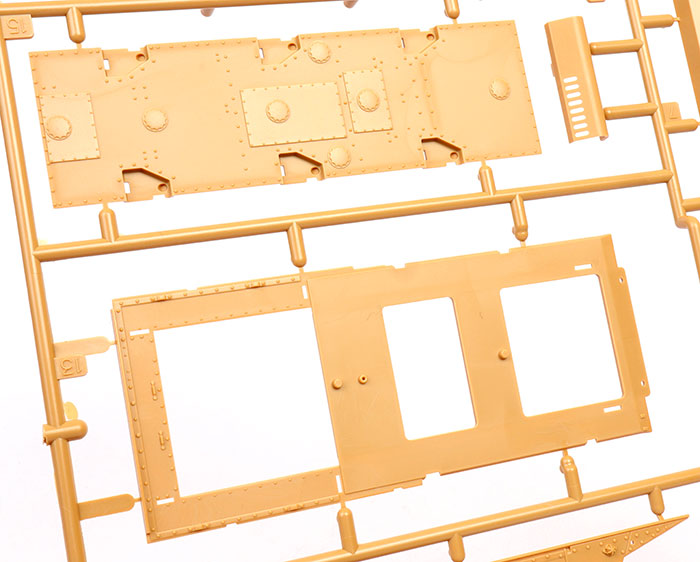
The superstructure sides and rear are made up of individual panels.
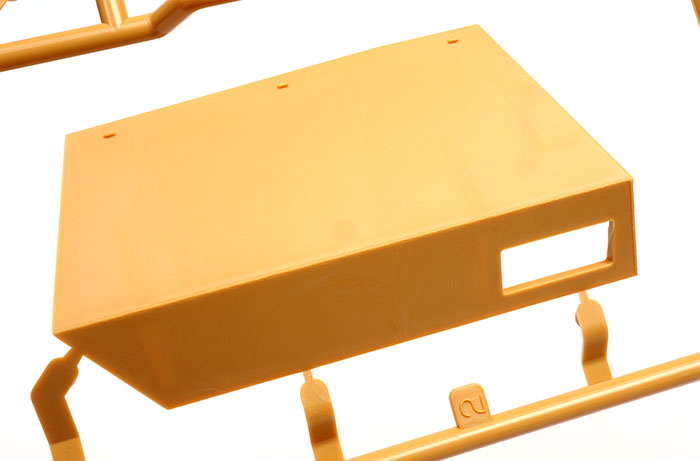
The 75mm gun looks great straight from the box. The gun features a poseable breech block and the ability to elevate and traverse.
Likewise, the spare ammo boxes, radio, stowage and weapons on the inner sides of the fighting compartment are suitably busy and very well detailed.
There are a number of ejector pin circles that will be visible on the inside of the side armour plates and the rear hatch, but these will be easy to scrape off and sand flat.
The running gear comprises swing arms, axles and leaf springs moulded in one piece each, to which are added simple two-piece road wheels.
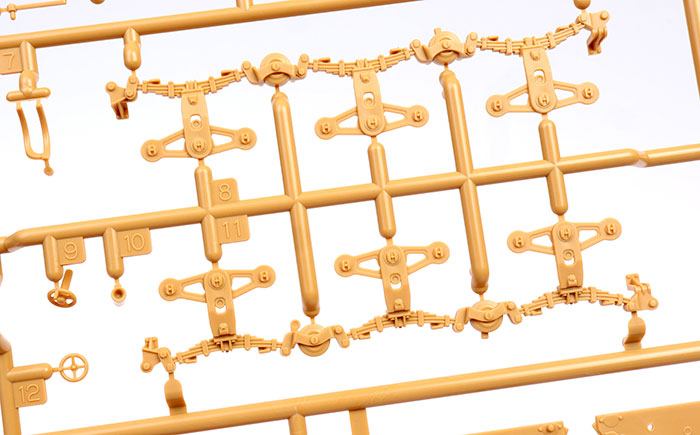
The tracks are made up from a combination of sections of single links, short links, a long flat bottom run and a subtly draped upper run. Detail on the outer surface is very well done. There are the ghosts of ejector pin marks on the inside surfaces of the tracks.
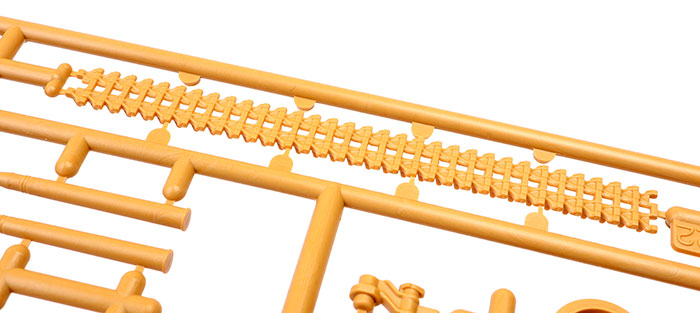
You could spend a fair amount of time cleaning these up but in reality you will be hard pressed to see them when the model is built.
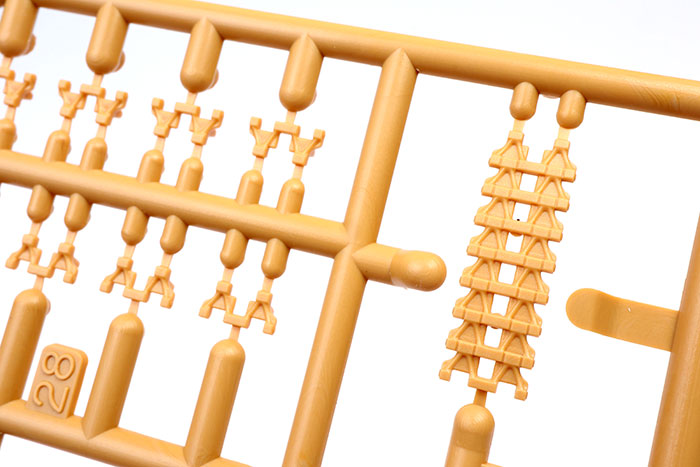
Smaller detail parts such as tools, tow cable guides and the gun barrel travel lock are well moulded. Some of the detail on the tools looks a little basic now and might be enhanced with photo-etched clamps or after-market replacements.
The plastic parts are rounded out with two brand new crew figures.
In common with Tamiya’s recent figure release, they are all well moulded and the facial detail is particularly nice.
The only multimedia in the kit is a length of string for the tow cable.
Two simple marking options are provided – one in Panzer Grey, one with a winter whitewash and a wavy three colour scheme of Dark Green and Red Brown over Dark Yellow.
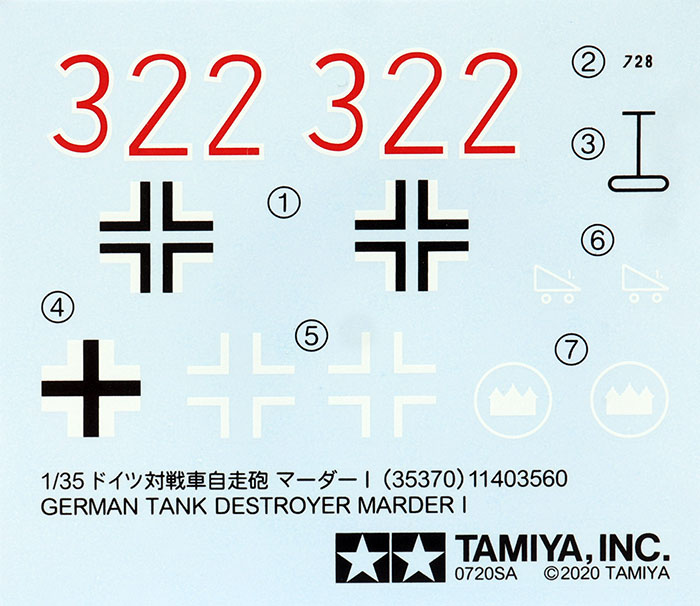
The instructions are well laid out over 35 steps with clear illustrations supplemented by brief text directions where required. The section dealing with the tracks is especially well done.
C o n c l u s i o n
Once again, Tamiya has delivered a well-detailed and easy to build model of an iconic vehicle.
Tamiya’s new Marder I features plenty of detail and stowage in the fighting compartment, and the link and length tracks is very welcome. The two included figures will deliver an instant vignette too.
Chalk another one up to Tamiya!
*Historical summary courtesy of Wikipedia.
Purchased by the reviewer
Tamiya kits are distributed in the UK by The Hobby Company Limited www.hobbyco.net
Text and Images by Brett Green
Page Created 28 November, 2020
Page Last Updated
28 November, 2020











